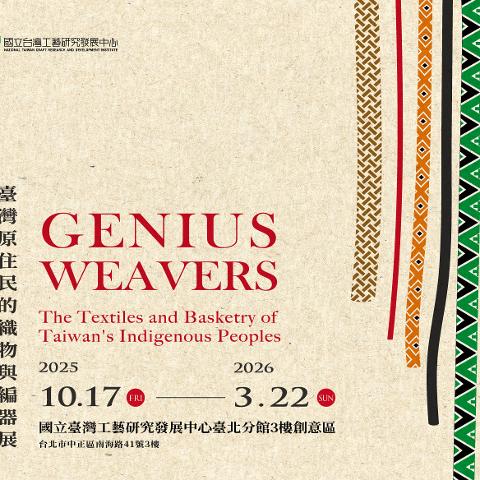
參展介紹
卡塔文化工作室
卡塔文化工作室
位於臺東糖廠園區內的卡塔文化工作室以保存排灣族琉璃珠圖紋與技術為基礎的自主營運工作室,進駐臺東糖廠倉庫設立平台,將倉庫變身為精彩萬分的部落手工藝創意商品展售空間,以「分享互助」模式在現今社會環境中,架構著一股「社會責任」概念的合作經濟發展趨勢,更結合部落工藝師分享令人驚艷的大型裝置藝術,以文化相互串連,用心發掘屬於臺東的風格物品,使得臺東的風貌更加明顯。
由卡塔文化推動的「手在部落」文化課程包含部落工藝文化查踏、傳統工藝產品創思營與專題研習三個面向,至今已進行了近15年,每年向公私立機關團體募集經費支持傳續文化學習,參與的成員以原住民工藝職人與文化工作者為主,於每年三至六月選擇一個部落與一位擁有傳統技藝的部落耆老,做為學習的對象與文化查踏之地,讓工藝創作者有機會重新學習與深耕文化母源,內容涉及了傳統媒材的採集與材料整理、傳統技術的結構與順序、傳統文化與生活工藝品之間的關係、族群間傳統色彩的差異以及各族群與部落文化體制的學習等,讓式微的工藝得以延續並保存文化的獨特性,更藉此培養更多傳承的種子與部落社群及工作坊結合,透過與部落耆老分享合作,形成深度的相互回饋圈,讓更多原住民工藝創作者重視文化的存在性,並以創意做為轉譯傳統的工具,將部落族群的特色與精神得以輸出。
重要記事
2015 出版《月桃本事》原住民工藝技法與材質書1
2016 出版《部落書寫體─針路》原住民工藝技法與材質書2
2017 出版《山中祖靈線─籐》原住民工藝技法與材質書3
2018年 協助排灣族織布藝師許春美登錄重要傳統工藝保存者並於2021年獲文化部公告認定許春美為「排灣族tjemenun傳統織布」之保存者
2020出版《tjinnun tuwa paiwan排灣族的織布》傳統織布技法圖錄
2022年 協助排灣族琉璃珠藝師江雅蕾獲屏東縣政府認定為傳統工藝「琉璃珠qata」之保存者
2023出版《Amis Putay花帽上的工藝》臺東阿美族女性花帽技法書
Based in the former Taitug Sugar Factory, Ata Aboriginal Cultural Craft Studio is a self-sustaining initiative dedicated to preserving the Paiwan tradition of glass-bead patterns and techniques. Located in a repurposed warehouse of the former Taitung Sugar Factory, the studio has transformed the space into a lively marketplace for Indigenous crafts and creative goods. Operating on a spirit of sharing and mutual support, it embodies a cooperative model of social responsibility within today’s society. Beyond craft sales, the studio collaborates with tribal artisans to present striking large-scale installations, weaving cultural connections while uncovering objects that reflect Taitung’s unique identity. In doing so, Ata strengthens the visibility and distinct cultural presence of the region.
“Hand in the Tribe”—an initiative led by Ata Aboriginal Cultural Craft Studio—has been running for nearly fifteen years. The program integrates three core components: cultural fieldwork in Indigenous communities, creative workshops on traditional crafts, and thematic research seminars. Funded annually through public and private support, it sustains intergenerational learning and cultural continuity.
Primarily involving Indigenous artisans and cultural practitioners, the program selects a community and an elder skilled in traditional techniques each year between March and June. These elders serve as mentors and sources of knowledge, providing craft creators the opportunity to reconnect with their cultural roots. Participants engage in hands-on learning that covers collecting and preparing natural materials, mastering the structure and sequence of traditional techniques, understanding the relationship between cultural practices and everyday craft objects, exploring color traditions across tribes, and studying tribal cultural systems.
By fostering direct engagement with both elders and communities, the program helps preserve endangered crafts and maintain cultural distinctiveness. It also cultivates new custodians of tradition, encouraging collaboration between creators, elders, and local workshops. This cycle of mutual exchange emphasizes the ongoing relevance of Indigenous culture while inspiring innovative reinterpretations of tradition, allowing the spirit and identity of each community to resonate beyond its local context.
Key Milestones
2015 – The Story of Shell Ginger (Vol. 1): first in a series of books on indigenous craft materials and techniques.
2016 – Tribal Scripts—The Path of the Needle (Vol. 2) published.
2017 – Ancestral Threads in the Mountains—Rattan (Vol. 3) published.
2018 – Supported Paiwan weaver Ljumiang Pacekelj in being recognized as an Important Traditional Craft Preserver. In 2021, the Ministry of Culture formally designated her as the Preserver of tjemenun (Paiwan traditional weaving).
2020 – Published tjinnun tuwa paiwan: Paiwan Traditional Weaving, a comprehensive catalogue of weaving techniques.
2022 – Assisted Paiwan glass-bead artisan Ankil Taljimaraw, who was designated by the Pingtung County Government as the Preserver of qata glass beads.
2023 – Published Amis Putay: The Craft of Floral Hats, documenting the traditional hat-making techniques of Amis women in Taitung.

